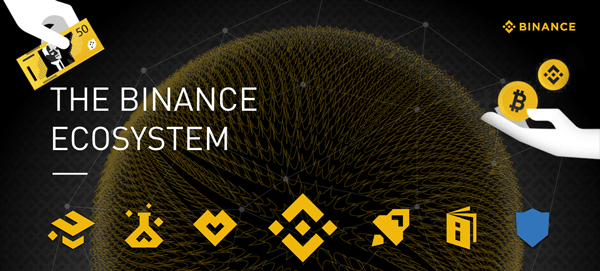
Years after CryptoKitties were released to the masses, the nonfungible token (NFT) sector is finally going places.
Coveted collectibles are selling for millions of dollars in some of the world’s finest auction houses. Top-flight soccer and basketball teams are releasing once-in-a-lifetime moments that fans cherish. Movie studios are starting to issue NFTs as memorabilia too, unlocking new revenue streams when they are needed most.
It’s little wonder that NFT-focused companies are attracting eye-watering valuations. Just take a look at Sorare, which is on track to secure a price tag of at least $3.8 billion through its latest funding round. Although there have been endless proclamations that a bubble is forming in this nascent space, big brands are convinced these assets have staying power. Let’s not forget the countless use cases for NFTs that have yet to be discovered, too.
Unfortunately, a dark cloud is hovering on the horizon — and it’s one that risks holding the NFT sector back. Right now, blockchain technology doesn’t provide anywhere near enough value propositions to motivate a user to own these crypto collectibles. If the market is going to proliferate — and attract everyday users — the industry needs to tackle three key design issues.
The thorny issue of ownership
Let’s imagine you own an NFT that represents a beautiful piece of artwork by a celebrated painter. In all likelihood, you would have paid a pretty penny for it.
But here’s the problem: That crypto collectible is completely worthless without the existence of the underlying asset it’s meant to represent. Right now, there is a huge cost to permanently store the high-resolution image data that gives such NFTs their value. The problem is exacerbated even further when you take videos into account.
Related: NFTs make it possible for gamers to have digital property rights
Without the right incentives, blockchain nodes responsible for protecting these files may not function as they should, and this could cause NFT data to be lost irretrievably. It’s one thing to pay $1 million for a rare nonfungible token — it’s quite another to lose that investment because of circumstances that lie out of your control.
The best approach to solving this problem is to ensure that economic incentives are more widely distributed whenever NFTs are sold — beyond the token’s original creator, the seller or the marketplace facilitating the transaction. Nodes should be given a cut of the profits too.
Protecting content
Even if this design flaw is speedily addressed, others arise that could undermine the value of a rare NFT. At present, most content protection mechanisms used for digital assets are either nonexistent or weak. The data underpinning digital collectibles is typically stored on centralized file servers, which increases the likelihood of hacking — or exclusive data being shared illegally.
Related: To change the art industry, NFTs must be more secure
For an NFT to be truly valuable, only its owner should be able to see and enjoy the data that’s contained within. Implementing digital rights management, or DRM, would help to protect an investment, and it could help assuage some of the concerns surrounding what marketplaces are actually selling. This approach wouldn’t be too dissimilar to the approach that Apple took when it launched its iTunes Store, adding DRM to music to ensure that it was rightfully the owner’s track and nobody else’s.
Ownership bound to identity
Last but by no means least, we need to reflect on the fact that NFTs cannot be exchanged — and this means that once they’re lost or stolen, the damage is permanent.
If nonfungible tokens are going to become a dominant force in the coming decades, we need to create a mechanism where NFTs can be inherited — allowing coveted digital assets to be passed from one generation to the next. We shouldn’t bind the ownership of an NFT to a private key — instead, a blockchain should tie these rights directly to someone’s identity. This will help future-proof this asset class and ensure that control is never lost.
Related: Will regulation adapt to crypto, or crypto to regulation? Experts answer
We already live in a world where information is lost at alarming rates. Millions of web pages — filled with vivid stories, photos and videos — have already been taken down and lost forever. To let the same thing happen to NFTs would be a travesty.
Now is the time to act. The NFT industry is still at an early phase, and sweeping improvements can be made before we advance to mass adoption. Failing to tackle these design flaws could ultimately stymie the size of this industry years down the line and cause sizable headaches for those who have invested in tokens worth more than houses.
This article does not contain investment advice or recommendations. Every investment and trading move involves risk, and readers should conduct their own research when making a decision.
The views, thoughts and opinions expressed here are the author’s alone and do not necessarily reflect or represent the views and opinions of Cointelegraph.
Phantom Seokgu Yun is the CEO and chief scientist of SWN Global. He has over 25 years of experience in cryptography, algorithms and security architectures. Phantom has provided security solutions to Davos and G20 summits, LG, Samsung and Yahoo, among other multinational corporations. He currently leads the MetaMUI CBDC and NFTs platform, the first identity-based blockchain.





 Bitcoin
Bitcoin  Ethereum
Ethereum  Tether
Tether  Solana
Solana  USDC
USDC  XRP
XRP  Lido Staked Ether
Lido Staked Ether  Dogecoin
Dogecoin  Toncoin
Toncoin
Be the first to comment